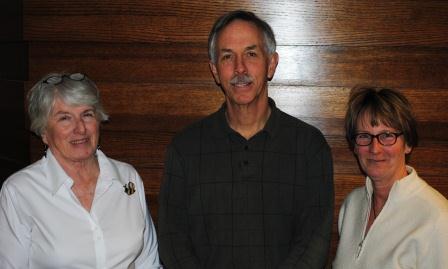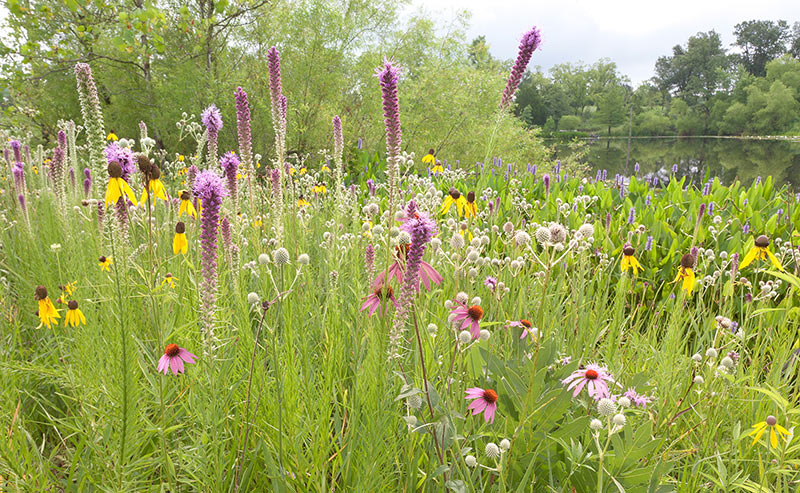Ohhhhh. I love this! And you can order one for yourself at Design by Humans. I have nothing to do with this wonderful shirt. I have no idea who designed it. All I know is, you’re gonna see me wearing it.
Ohhhhh. I love this! And you can order one for yourself at Design by Humans. I have nothing to do with this wonderful shirt. I have no idea who designed it. All I know is, you’re gonna see me wearing it.
Reader, even though it snowed like crazy last night, it’s not too early to think of bees happily flying in the sun and foraging on beautiful flowers. So, in the spirit of the spring that will surely cometh, please enjoy this poster. And use it to plant something in your yard that the bees will love.
(And if you’d like to own this Hannah-Rosengren-designed poster yourself, go here. I ordered two, and they arrived within only a day or two.)

Reader, yesterday I spent some time with two other very wonderful beekeepers. On a cold, snowy day in February, we dreamed of spring. We all sat in the fine studios of WVXU (Cincinnati’s NPR station) wearing our very cool headphones and talking into big fuzzy microphones. For about 25 minutes, we talked about the joys of beekeeping. It wasn’t nearly enough time.
Perhaps I talked a bit too much. Perhaps I sounded overly enthusiastic. Perhaps I should tone it down sometimes. But if you’ve been wondering all this time what Ray Babcock (President of Southwestern Ohio Beekeepers Association, known affectionately as SWOBA by the locals), Sandra Murphy (educator at Gorman Heritage Farms) and I sound like, here you go (once you arrive at this WVXU location, click “Listen”):
I like both Ray and Sandra a lot.
And here’s the picture the nice people at WVXU took of us. They took three images. The minute they took the last one—the one that caught me sort switching between smiles—I knew that’s the one they’d use. Sure enough.



Reader, as you know by now, wild is better for bees. And when I say “wild,” I mean a wild habitat. Wildness. Wild flowers.
Manicured lawns have absolutely nothing to offer the bees.
Those bees that I keep in neighborhoods with manicured lawns—those lawns sprayed to remove all hint of dandelion and clover and gorgeous weeds—starve. The bees starve because after the trees lose their blooms and leaf out in the spring, nothing remains on which the bees can forage. Summer and autumn and winter become a prolonged dearth.
Those bees living in areas with wild prairie and meadows, those hives that have access to three-season forage, thrive.
I drive through my neighborhood and I see nothing but manicured lawns. I live in a beautiful, affluent neighborhood. One known for its stewardship of green spaces. But I’m coming to realize that my affluent neighbors and I have been neglectful. We’ve neglected the wild. We keep the wild too much at bay. Much to the detriment of our wildlife. And our wild lives. We need our wild lives.
So, this year, Reader, I’m on a bandwagon.
I plan to gather my affluent and influential clients…those who have lawn to spare. Those who hire landscapers to keep their expansive lawns nice and green. Those who can afford to do what I propose. I want us to meet together with representatives of Ohio Prairie Nursery and with our landscapers and with our city council representatives. I want us to begin devoting parts of our lawn to wildness.
Watch us, Reader. We’re gonna transform our lives. And it will be gorgeous.

Reader, I know you love your coffee. I know you love your coffee in quirky little local coffee shops. And when you drink your wonderful drinks there, you like to add a small bit of local honey to your cup.
I’m here to introduce you to Redtree Art Gallery and Coffee Shop, which is where I often go when I want to write and daydream. Redtree is filled to the brim with local art, which makes it a delightful place to wander. What’s more, Redtree and Brazee Street Studios—the beautiful art studio surrounded by native Ohio prairie flowers and where TwoHoneys maintains a number of beehives—are neighbors. Close neighbors. And now Redtree offers our very own TwoHoneys Bee Co honey…local honey collected by the bees that fly in the neighborhood in which you drink your coffee. And that, my friends, is seriously local.
Go there. Add some honey to your day.


Happy New Year, Reader, and what a perfect time for our thoughts to turn to the bees. :)
These past weeks, I’ve received a surprising number of emails and phone calls from those lucky people who received beehives for Christmas. And I must say, what a terrific gift idea! And for this very reason, next Christmas I plan to offer TwoHoneys gift certificates.
So, here are my January and February suggestions for those of you looking forward to your first season with bees:
There. That should get us all started into the new year, yes?
